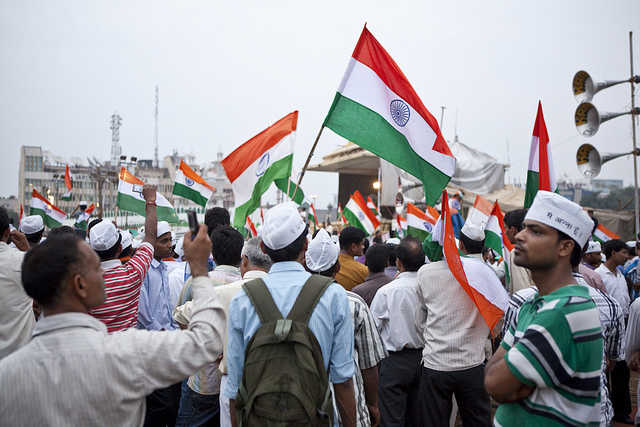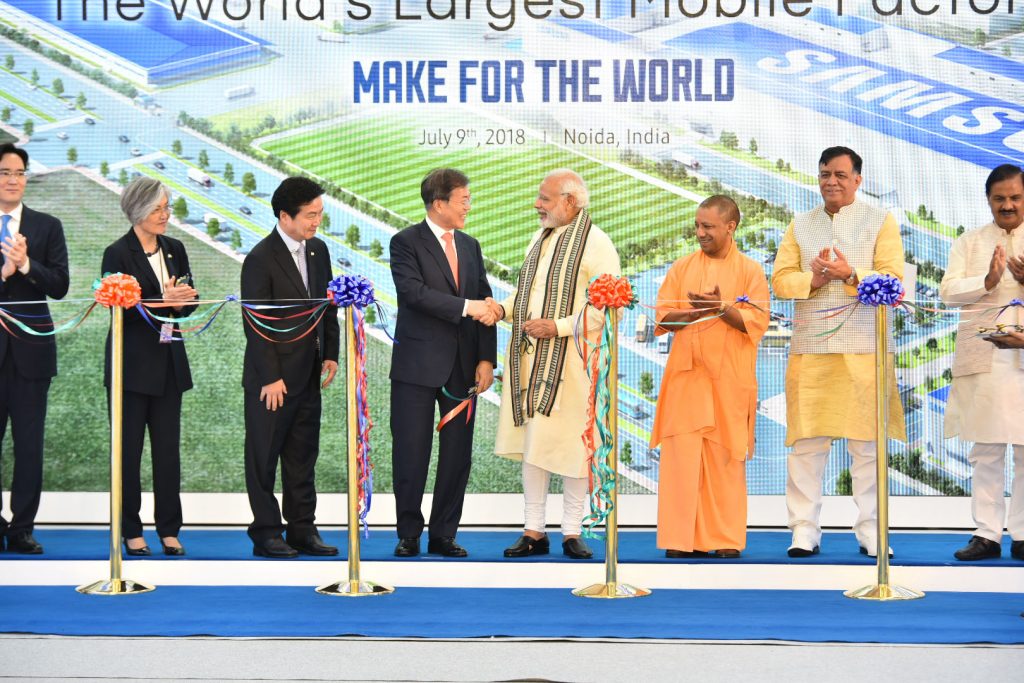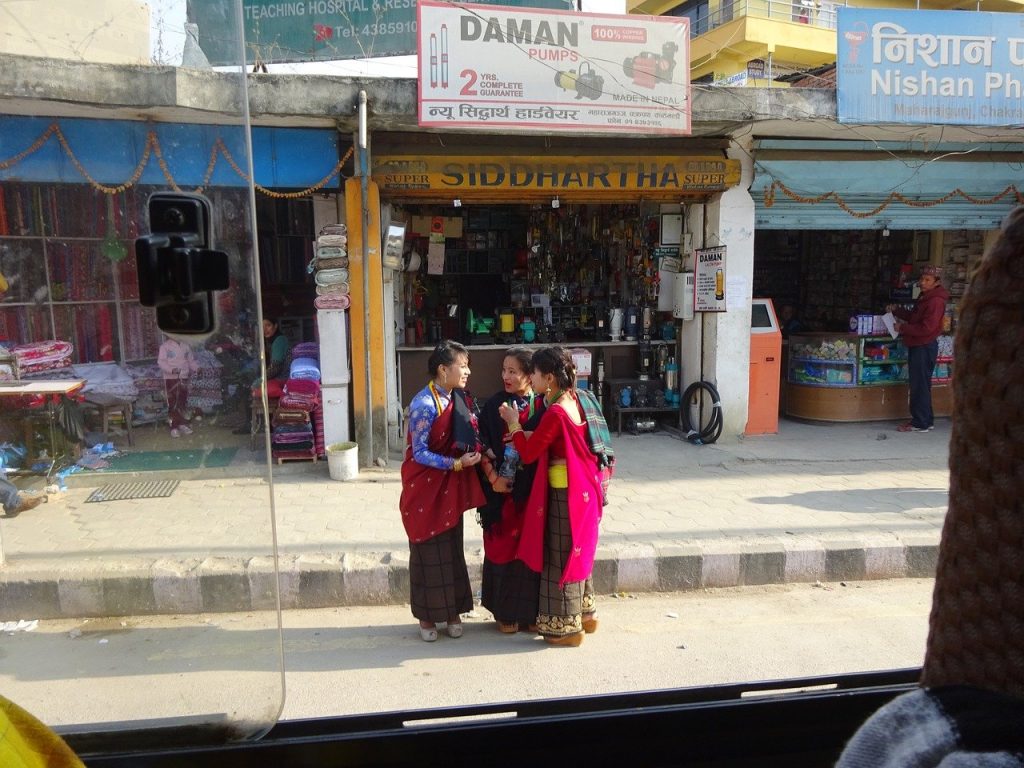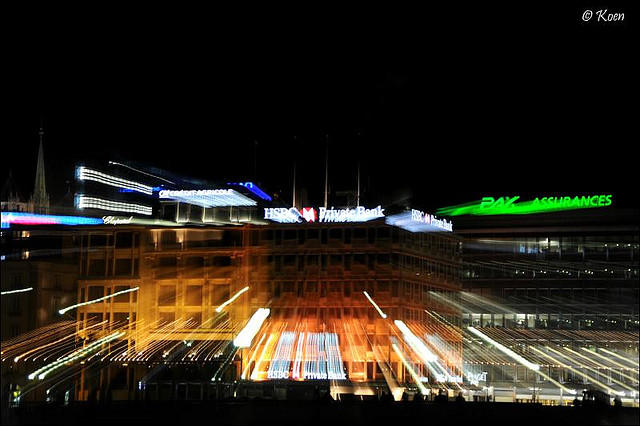India
Can We Afford Another Unquestionable Mahatma?
Most people are predisposed to consuming news, views and analysis that fits their own world-view. To save you the effort of reading a critique of Anna and then being disappointed that it was not from the perspective of saying he is on the wrong side, I will state upfront that I stand strongly with the anti-corruption drive. In fact, I am for expanding the revolution to a progressive holistic drive with bigger goals of sustainable development and socio-economic level playing field for everyone in the country. This is a criticism of the unquestioning wide-eyed support and personality cult resulting in both deification and vilification of heroes instead of the focus being on policies. An unquestioning support during our independence struggle to those who made money on the name of the saint of Sabarmati or those who came to power by stoking religious fervour, gave us broken, fractured and chaotic countries instead of a possible modern, secular, progressive and united Indic region. I do not wish to see a repeat of our past mistakes of having too much reverence and faith in leaders. The personality cult of leaders, Gandhi, Jinnah and others at the time of independence and now of Anna or Nehru-Gandhi royalty is a manifestation of an infantile weak spot of our culture. Just as Gandhi played an important role in the fight against British, so have Anna and his team, in what is essentially a revolution of our generation but if we put blind faith in anyone, instead of harbingering a real change in Indian life, we could be cheering for exit of one corrupt politician in New Delhi, only to make way for another. If we let political opportunists ride people’s genuine discontentment against corruption, then only the masks in Delhi would change but not the corrupt culture. The goal for a common man is not to replace a crook that comes with a label of UPA, with another crook having a label of NDA or communist or regional party but a genuine transformation of the system.
Personality cult and following should not be confused with a questioning admiration of leaders and their views. Let me make it clear too that I admire Anna as a person and more importantly the movement he symbolizes on many but not all the issues. I do not want to make a great hero into a scapegoat just as I would not see him made into a sacred cow. I am also not interested in driving the catalyst of this anti-corruption campaign into ditch by promoting questioning of personal conduct and beliefs too much. Beliefs and personal conducts of leaders are important but vastly less than the policies they guide, hence my admiration and criticism is mainly about the policies of the team Anna. Just as we question the direction of anti-corruption movement, it is far more important to question a government that has been arrogant, incompetent, unjust, corrupt and dictatorial. In the same breath of questioning Anna, we also need to ask ourselves if we should buy into the demonization of Anna, the person, as well as the phenomenon. This demonization of Anna by the bulldogs of Congress would not have been much different by any other party in power. Support and opposition to this bill is based on shear political equations and not because of principles. So my criticism is of the whole opportunistic political class in general and not specifically of the chamchas, yes men of Sonia memsahib and Yuvraj Rahul, the heir apparent. We need heroes to be the Sutradhars between chapters of history (those who connect one episode of the play to another, providing continuity and transition) but not be the Margdarshaks (spiritual guides). We all need to be our own margadarshaks for a vibrant democracy. Heroes are required as catalysts of struggles but they should never be made bigger than issues. We need our Irom Sharmilas, Medha Patkars and Anna Hazares to lead in fights to make a better India. We need to stand by our heroes when they make sense and we need to pack them home when they don’t. The dangers of personality cult, irrespective of the current portrayal in popular history, of Gandhi, Nehru, Subhas, Patel, Jinnah, Hitler, Roosevelt, Mandela, Stalin, Mao and Churchill etcetera are all too evident to me at least, to do the mistake of putting anyone above questioning.

Anna Hazare Anti-Corruption Rally, Delhi. flickr/ishanz
While I was very active in my humble internet activism ways in recruiting people for the campaign, I never said that “I am Anna”, wore his cap or will ever do such a thing but I never miss any opportunity to land a right hook or a straight jab at the corrupt political class within the confines of currently popular and pragmatic ahimsa sentiment. I was not yelling in unison along with the drunk on patriotism crowd that was at times (not always) rather poorly informed, unquestioning and wide-eyed, looking for a miracle cure to corruption. Yet, despite my serious differences, I was not throwing the kitchen sink at Anna when the political class had let its hounds free to tarnish his image. My resurgent support and criticism comes at this crucial juncture now when we need to unite again for a next big round of fight with the ruling elite so that we can have a better-informed campaign. This opinion piece in essence is an appeal to have an independent and critical thinking. I believe such an approach would increase participation in social campaigns, including the ongoing anti-corruption struggle rather that decrease ones enthusiasm. I believe this questioning would help us to steer this campaign away from becoming a tool of selfish politicians back to the original intent of being a vehicle of people’s voice. This questioning would also make us realize that lokpall (citizens’ ombudsman bill), if successfully implemented, can only take out some corruption but not the whole of it. It is not a panacea but just a step in the right direction. Questioning will lead us to desire a bigger cultural and educational shift, judicial reform, executive reform, and checks on corruption-infested media, armed forces and corporate houses, while in parallel laying foundations for construction of an alternative system based on evidence and not ideology. This questioning spirit will also dissuade genuinely and justifiably angry people from supporting reactionary ideologies that advocate overthrowing a rotten system without presenting viable better alternatives.
During this campaign I was also not sure if the Bharat Mata that was being invoked every time by my neighbouring shopkeeper, few of my corrupt-to-core relatives, a poor rickshaw wallah, an idealist retired teacher, poor homeless kids, a hideously corrupt local MLA, a military widow of a shaheed sipahi, all those were the same Bharat Matas. I am not sure whether my Bharat Mata would even be able to stand the reeking presence of Bharat Matas of one my corrupt relatives, policemen, the local MLA, the kind of criminals whose day starts with corruption laden ritual of bribing a some God with a ‘chadhawa’ (bribe), with a hope that in their whole day they can in return get enough chadhawa from lesser mortals than themselves. I am in the struggle not because of emotional appeal on the name of mother India but because I see hope in eyes of people for whom this fight is not just a vain vent to their middle class anger but a fight for a better tomorrow. I see with such an involvement, a chance for our nation to reach its full potential. No, I am not completely immune to sentimentality myself, though I prefer not to leave my objectivity glasses at home. I fell in tragic love with the sentiment too, when as a bystander, I heard in a solidarity march that erupted spontaneously, poor street kids and some handicapped old women sing Vande Matram. For all my cold-blooded intellectual analysis, it was difficult for me to stop my tears from trickling. It was impossible not to feel overwhelmed with joy to see such hope and I could also not stay untouched by a deep sense of sorrow and shame to see that the banner of hope is held high by the ones with the most hopeless predicament. How much I wanted to tell them that it would not be all right for them even after an effective lokpall bill is enacted, that it will take a bigger transformation but I could not be heartless enough to break their transient hope bubble.
On the other hand, at times, I found the crowd quite unbearable, especially when I saw someone with enough gold on them, guaranteed from black money, to feed at least hundred people for a month. One could find both a well-fed fat man and a skeleton of a human marching together with fist up against the dysfunctional and non-representative but supposedly elected government, with slogans of “inqalaab zindabad” (long live revolution). This imagery reminded compatriots involved in the anticorruption campaign of the struggle of Chadrashekhar Azaad, Gandhi and Bose while the same imagery was portrayed by the government sympathizers as similar to one during the rise of the Third Reich. Undoubtedly this push towards increased transparency and democracy is an ongoing revolution of our generation, with Anna’s galvanization of public outpour a chapter worth writing with golden letters but is there a genuine parallel with the Fascist and the Nazi rise? Yes for sure, in terms of imagery, but not because that is the overwhelming character of the anticorruption revolution at least up till now but because all revolutions whether good or hideous in consequence, are all born of social crises and these occasions give hope to the needy and are grossly capitalized by the greedy. So the fat cat who wants bigger profit than what he can get from the current system will also march with the skeleton of a human- who has nothing but a hope to live on, only chains to free from. It is for a vibrant democracy to make sure that the outcomes of such social upheaval are good and not disastrous. Whenever people stop questioning their leaders, revolutions start to rot and produce fat cat politicians. Were participants bending and breaking the constitution? Absolutely and unapologetically yes, just as Gandhi was during his salt march. In fact the break from constitution was a lot less radical than the actions of our heroes of yesteryears like Batukeshwar Dutt and Bhagat Singh who had to make noise loud enough to make the deaf hear. Were they democratic? Yes and no, it depends on the aspects and consequences of this campaign. Let us talk about it in a little bit after we have looked at whose campaign it is, as of today.
For a complete understanding of what precipitated this mass movement, we need to look back at the oppression and failure of the conglomerate of the political, bureaucratic and ruling corporate class over these years, along with the various short and long-lived violent and non-violent responses to the shortcomings of this constantly evolving Indian story. We need to look at the sources, the catalysts and the vehicles of mass struggles including the different colours of this Anna carnival, as it is proceeding under the full media glare of 24-7 television. A look at faces of people involved, can tell you who started the fire and who provides the fuel. This struggle in the beginning of its first round, acted as a safety valve for the middle class anger, releasing the pressure and hence preventing an Arab Spring like uprising. By the end of the first round, the idea reached out to almost all sections of our society. The message now resonates with street hawkers and rickshaw pullers who have to pay the policemen a bribe to do their business, it resonates with farmers suffering from local and state corruption and it resonates with youth who have to frequently pay bribes to get decent education and jobs. Now looking at the faces of this campaign one sees politicians on stage trying to cash in, when the fruit of public discontentment is ripe for harvest. One has already seen the drama of Advani’s anti corruption yatra where press reporters were given envelopes with cash so they cover his anti-corruption drive and how Modi spent money from state budget on his anti-corruption fast while refusing to accept a lokayukta to enquire 17 serious charges of multimillion embezzlement and corruption against himself. Who can forget Yedurappa of Karnata in cahoots of mining mafia either? Does one have to travel much deep into UP to see the corrupt fangs of Maya madam? I think just a trip to Noida can be enough. It is not just Lalu but almost everyone who ends up eating chara. Only in India can an uneducated coolie rise to be a multibillionaire, no, not through innovation or entrepreneurship, certainly not through hard physical labor but by whoring out the state resources in position of a chief minister to the mining mafia. The corruption of politicians does not fail to leave a mark even on national defense, whether it is purchase of guns like Bofors or coffins for our martyrs. Corruption and incompetence does not come with the slap of congress alone, it comes in form of trident of RSS up an aam admi’s rear and it also comes in the form of a hammer and sickle of CPM. Some abhineta may apologize to the neta log for the fear of consequences of telling that the king is naked but does an aam admi have any doubt of how someone’s fortunes change when they get elected or marry someone in power, say a rise from a small time scrap dealer to a billionaire for marrying into royal political dynasty? While the middle class started this fire, the whole Indian population continues to provide the fuel and now the political vultures are already eyeing the carcass of the current government, getting ready for a cannibalistic orgy of sorts.
The protest to this point has been mostly about reforming the current economic road that India has taken, with even the central architects of this campaign not thinking in terms of bigger socio-economic structures responsible for corruption and bigger issue of underdevelopment, ecological rape, socio-economic inequity and ethnic strife. The movement at present does not have any realistic ideas of dealing with the pillage of globalization, either of changing the course or of staying on course but making modifications to maximize the benefits for a common man while minimizing the losses. In some senses, this campaign is not that different than our freedom struggle in the very beginning of 20th century where ideas, ideologies and plans for long term combat are still in utero but what is clear is the dire need of reduced corruption. What is a common unifier for people with very different views of India, ideologies and objectives, is currently a common enemy and this time it is the Bhura sahibs sitting tight on kursi instead of the Gora sahibs. It is also not that different than our freedom struggle in the sense that literate and well to do sections first took fancy to the idea but the movement really took its wings with a mass appeal galvanized by Anna. It is also not that different in character from our Independence struggle that the butchers, both in power and opposition, with shear personal ambitions are already sharpening their knives in anticipation of the innocent lamb of Indian aspirations to become fat enough for slaughter.
Let us return to the question of the democratic impact and long run imprint of this campaign. This movement marked for the first time in the history of independent India a successful bending down of representative democracy for the sake of a participatory democracy. It may sound all good and definitely has great positive potential that attracted me to it but it is a gamble with the future, a real tryst with our destiny, unlike a mere transition in the skin colour of the rulers of India. The reason it is a great gamble is that with over 1.2 billion people in India, in its current form, it is impossible to have a participatory democracy for all issues or on regular basis. If people need to stop their work and fight against the system for making changes every time, we will eventually descend into anarchy. Can better ways be evolved with technology to have more participation? The use of technology for better participation is certainly possible but I will keep that analysis for some other place. There is a big question in minds of many that if unelected people can speak on behalf of majority of the country. At this moment that is not the biggest concern, at least to me, as most of India stands behind this anti-corruption drive. That does not mean that such questions could not be a valid at other times but as of today there are other more valid concerns on the lines of chaos of participatory democracy. Let us evaluate these concerns in some detail.
What happened to the voice of voiceless? What happens to questions that matter to a small group but not everyone: questions like AFSPA that affect Indians in Kashmir and North-East? What happens to rape and harassment of poor villagers by the men in uniform, done to advance interests of the mining mafia and other business interests in collusion with politicians on the pretext of containing naxalites? What happens to people displaced due to so-called developmental projects of national importance, some agreeably real projects with positive impact, while others farcical schemes designed for land grab? Who will come to protest in the capital for this silent scattered voiceless humanity? Will these not so catchy and primetime-worthy protests in the far-flung regions of interior India matter to the media and hence to the public of India in general?
Can this way of Indian politic result in a hooligan culture? Is India strictly a country where one with bigger voice due to majority or vocal minority, ends up having their say? Are we forgetting the fear of a majority dictatorship, some real threat due to intolerant and bigoted actions of Hindu right wing at that time and some due to fictional concerns of a Hindu raj stoked by the selfish separatist leaders to create our militarily strong yet culturally and economically stillborn sibling of Pakistan? If resolution of issues will depend on a show of strength in few metropolitans, will this way of political life become a means of suppressing minority viewpoints? Aren’t we are all minorities on some issue? Only conformists with no brain of their own, seek comfort in being part of a sizable group to feel they are on the right side. Any freethinker is bound to be a minority at more than one occasion. Will the Indian story, a sublime and subtle failure in many dimensions but also one with great accomplishment of having some semblance of a democracy be thrown to dogs, with such a change in political culture? There were traces of fascist tendencies in crowd with youngsters of clearly affluent family having a picnic, yelling vande matram without understanding the meaning of it. Near zero understanding of problems facing India in some of the blind hero worshipping followers of this campaign, beyond empty sloganeering at high decibels could make anyone afraid of this crowd’s destructive potential. For some of the upper-middle privileged class, in the gym I went to while staying in Delhi, the protests were just cool, a place for socialization and meeting other single people. While this hooligan and picnic culture has been a lopsided picture portrayed by the pro government critiques, this aspect is almost completely ignored by those razzled-dazzled by Anna mania. This picture is undeniably true to a small extent but it is only one small dimension of the participation. This image ignores a significant informed activist section and an overwhelming majority that was seeking to be increasingly more informed. Anna’s team has not failed to inform people but when information has to come from the mouth of campaign alone, instead of proactive information gathering by the public from multiple sources, it can hardly be called an overwhelming success of informed democracy. If we are going to enter a much-needed era of increased participatory democracy, our struggle needs to meet the challenge of finding better mechanisms to counter and discourage hooligan culture soon.
Is majority always right? Most villagers in villages with honour killings done due to the rotten taboo of inter-cast relationships of Hinduism agree with their Panchayats. Has one forgotten the story of a poor Muslim woman ordered by Islamist panchayat of her village to marry her father in law who raped her? Are we not aware of sectarian feudal stone aged judgments anchored in stupid religious and cultural bigotry of Hinduism, Islam, Christianity and Sikhism alike that is passed by local majority in many regions of India on an everyday basis? Are dumb people in street more dangerous than their voices filtered through structures of so called democratic apparatus? This mass movement if gone awry can set a precedence for people to go against the constitutional framework that provides options of standing against popular sentiments to preserve modernity. No, I am not saying that the dysfunctional and corrupt judiciary often has any guts or conscience to stand up for the best national interests but there are few examples where progressive decisions have been made despite largely unpopular sentiments. Let me also make it clear the flip side of the coin, an argument for an elitist approach that some people have more wisdom than others is an equal recipe for dictatorship. The solution lies in balancing the two forces. Current constitutional fix of balancing safeguards and popular vote is not an optimal one but it is better than nothing. We soon need to find novel solutions to protect from the dangers of herd dictatorship without stifling the immense productive and transformational potential of participatory democracy.
While these questions remain in my mind and so does my support and criticism of the movement but I believe staying on the sidelines will not result in a better future for our country. I urge you to hop on this wagon of struggle. The journey is not going to be easy but it will be worthwhile. Express your views and question everything if you want to shape this revolution. We already had one Mahatma; one too many. We frankly cannot afford another one. We need more questionable and life like heroes like Gandhi (not Mahatma), Maulana Azaad, Ghaffar Khan, Bose, Ashfaqulla Khan, Bhagat Singh of yesteryears and leaders of today who hold no ambition of a political position like Irom Sharmila, Medha Patkar and Anna Hazare but most importantly we need politically active, everyday common man, woman and child to fight for India. With a questioning and healthy irreverent spirit, my dear compatriots may long live our revolution – Inqalaab Zindabad!
India
Government Changing Syllabus to Include Sikh History in India

Chief Minister of Uttar Pradesh, most populous state in India, has announced inclusion of Sikh history in the state syllabus. Students of all schools under UP State Board will see the new chapters. The announcement came when Chief Minister Yogi Adityanath (BJP) was observing Sahibzada Diwas.
Why do we Observe Sahibzada Diwas?
Sahibzada Diwas marks the martyrdom of four ‘sahibzada’ (or sons) of Guru Gobind Singh (10th Sikh Guru) and his mother Mata Gujri. In the year 1705, Mughal Emperor Aurangzeb had ordered torturing of youngest sons of Guru Gobind Singh aged 5 and 8. He later executed the little sons by burying them alive into a wall. The reason for this act was that they refused to convert to Islam. Soon after this event Guru Gobind Singh’s mother, Mata Gujri also martyred her life under Aurangzeb’s captivity. The cause of her death is still unclear. Guru Gobind Singh’s other two sons martyred their life in the Battle of Chamkaur Sahib. Thus the 10th Sikh Guru, Guru Gobind Singh had lost his whole family by 27th December. This is an important event in the Sikh history in India and UP Government is finally keen on observing Sahibzada Diwas every year.
Why UP Government is Changing the Syllabus?
Soon after the independence of India in 1947, the school education came under tight grip of far left and communists. Most of the Indian history in the recent past has been written by Romila Thapar and Irfan Habib. They have close ties with left wing ideology and Irfan Habib has delcared himself as Marxist. They wrote history text books by either phasing out sections of Indian history or diluting certain events. The motivation to soft alter the history has been to propagate left-wing/communist ideology. Historian Koenraad Elst once highlighted that Romila Thapar is comfortable neither in Sanskrit nor in Farsi language. The knowledge of these two languages is a must to understand India’s history.
In the recent years, various public opinions have gained momentum to rewrite Indian text books to include more content on Indian rulers and native ideas. Currently, Indian text books mainly teaches about foreign rulers of India such as Mughals and British.
With this announcement of inclusion of Sikh history in history text books, the government is bringing historical facts in mainstream.
27th December as Real Children’s Day
Chief Minister Yogi Adityanath has also reached out to the Education Minister to declare Sahibzada Diwas as Children’s day. He further added that “The history of Sikh gurus will be a part of the syllabus. Apart from this, we should observe December 27 every year as Sahibzada Diwas in all schools. Today is the day to pay gratitude to the sons of the Guru and mother who martyred their lives for the motherland, country and religion.” Yogi Adityanath also said that “No society can move ahead if it forgets history. The Sikh society is known for its hard work. The Sikh gurus sacrificed their lives to defend the Hindu religion. The country will always remember this.”
Yogi Adityanath added that learning about the sacrifices by Sikh Gurus would inspire future generations to dedicate themselves into nation-building. He emphasized that we should make future generations realize that India and Indian culture was safe because of sacrifices of Sikhs.
What Should We Do On Sahibzada Diwas?
Sahibzada Diwas should be an important day for every Indian regardless of their region, culture or religion. On this day, we are in the Holiday mood as it falls right between Christmas and New Year’s eve. However, we should remember that a Guru and his entire family sacrificed their life for the well being of India and the idea of India.
On this day we can fast, do sewa (service), visit a nearby Gurudwara and sleep on the floor at night.
China
Nepal Hindu Rashtra: Time to Wrap Up Communism?

Nepal abolished the Constitutional Monarchy in May 2008 and declared itself as a Federal Democratic Republic. There was a new hope in Nepal as it was becoming world’s newest democracy even though it had dissolved the Hindu Rashtra. However, the democracy in Nepal immediately got into the tight grips of leftists and communists backed by China. It has been almost 12 years since monarchy was abolished in Nepal. Interestingly, the Himalayan country has already seen 11 Prime Ministers in this period. Thus, leaving the Nepalese people still yearning for good and stable governance.
Re-establish Hindu Rashtra
As the political instability is growing in Nepal, people are demonstrating concerns about the future of the country. In fact, Nepalese citizens are unhappy with frequent interference by China and India influencing its unstable communist regime. More voices are now growing in support of reinstating the Monarchy and declaring Nepal as world’s only Hindu Rashtra (which by default offers full religious freedom to other religious minorities as per Hindutva concept of Sarva Dharma Sama Bhava – all paths lead to one).
Former Deputy Prime Minister of Nepal, Kamal Thapa said that if political parties do not recognize the seriousness of reinstating the monarchy, then the country will head for a period of darkness. “Recently, we’ve had high-ranking officials from India and China come to Nepal to try and solve problems within the ruling party,” he said. “We cannot let others dictate what we want to do.”
Communist Party All Set to Suppress Protests, By Force
Kamal Thapa has firmly demanded an all party meet to discuss reinstating of monarchy. Throughout the month of December, 2020 Nepal has seen anti communism protests across the country in support of reinstating the monarchy and Hindu Rashtra. Most importantly, the demand has become a nationwide mass people’s movement. So much so that the communist regime had to send a directive to 77 districts in 7 provinces. The directive suggests suppressing the protests by force. Nevertheless, Rashtriya Prajatantra Party and other royalist groups have ignored this threat from the communist regime. Protester groups have pledged to strengthen the protest in the coming weeks.
Nepal: Demonstration held in capital Kathmandu, demanding restoration of monarchy in the country. pic.twitter.com/TFjmKu9U9Z
— ANI (@ANI) December 5, 2020
Role of China – Hope for Communism in Nepal
China’s ambassador to Nepal is known to have very close relationship with Nepalese Communist regime. In fact, She has been super effective in tilting Nepal’s posture towards its ideological partner, China. One of her greatest achievements in 2020 was artificially manufacturing a border conflict between Nepal and India. Consequently, souring relations between the two Hindu majority nations. In addition, she managed to silence Nepal’s communist government after China took one of Nepal’s border villages under its control. However, recent political turmoil in Nepal and a renewed demand for reinstating of Hindu Monarchy is showing that the situation is now out of Chinese hands
Role of India
Year 2020, was not a good year for India and Nepal relations. India was busy in controlling domestic Covid cases. On the other hand, China had launched an invasive campaign into Indian territory. In addition, India is always busy with Pakistan on its western borders. However, the surprise came to India when China was almost successful in creating a new border tension between India and Nepal.
Those who do not know about Indian government should note that the current ruling party in India finds itself ideologically opposite to communism. This further creates differences between the two countries.
Communist party in Nepal has blamed India for supporting the ongoing anti communism protests in Nepal. However, former advisor to Nepal’s PM has suggested there is no proof that India is fueling pro Monarchy, anti communism demand in Nepal.
Nevertheless, There are certain influencers in India who have, in their personal capacity, expressed support for reinstating the Hindu monarchy. Yogi Adityanath, who is the Chief Minister of an Indian state bordering Nepal, said in 2015 that Nepal should declare itself a Hindu Monarchy. Readers should note that in 2015 Yogi Adityanath was not the Chief Minister yet. However, today he is not only popular in south of Nepal, his popularity is growing in Nepal as well.
Will The World See the first Hindu Rashtra?
It is difficult to answer this question at this moment. However, Nepalese communist government could not resolve the political instability and in December 2020 Nepalese government dissolved the parliament. Nepal will see next elections in April – May 2021. Hopefully, the world will see Nepal’s 12th Prime Minister in 13 years or may be a Hindu King? Royalists and protester groups have expressed confidence in winning next elections. We have our eyes on Nepal for updates.
India
Humanity Endures During Coronavirus Pandemic

Photo by Press Information Bureau, Government of India
The world changed exponentially since the pandemic broke out. We changed too. Emotions are running high. We have learnt to take one day at a time and have stopped expecting changes to happen overnight.
“COVID19 is menacing the whole of humanity – and so the whole of humanity must fight back”
A clarion call from United Nations Secretary-General António Guterres is a call to unity and solidarity. Already plagued by natural/manmade disasters and wars, many countries seem to bite the dust for want of resources in the fight against the virus. Warning each other against complacency is appreciable but never a blame game to cover up a dysfunctional response. Not all update themselves on the governments, new economic policies and R&D on Covid vaccine. Many we come across seem to be making wise individual choices. No matter how badly the tiers of government fail us, there will always be thousands of people working to make things better. Besides, finding reasons and faults on policies for the spread doesn’t help. A virulent strain of flu had managed to spread within a few months to the remotest corners of the world infecting half a billion people – more than a quarter of the human species in 1918 long before the current age of globalization.
Separating, alienating and forswearing the endless moments of contact that knit society together thrust us into frightening new realities. The good is still there. Social distancing is nothing but taking a step back to literally give breathing space to others. Going by news & views, we understand that amid concerns of rising numbers of positive cases in frustrating circumstances, acts of kindness and solidarity are burgeoning. Yes, it’s been extremely sad and sobering to watch this all unfold, but watching people share resources and supporting one another in every conceivable way has made us feel more connected to our local communities. Whether singing a song together out on balconies, getting groceries for the elderly or calling a friend to alleviate anxiety and fear, each one I know play a part and take comfort in a sense of togetherness. We are steadily aware of our limitations yet don’t hesitate to free our wells of compassion. Do we think twice and thrice to make an online contribution to save the lives of people we don’t know and will never know!
Sadly, it has taken an invisible virus to help us belive once again that we are strongest only when we have the welfare of others in our mind. Halfway through quarantine and self-isolation a phone call, a kind word, an opportunity to reach out, a breeze, bird calls, one good news and loss of a loved one, we are hit with the necessary humility and awe we ought to feel and appreciate just how beautiful our world is and precious life is.
Post pandemic recovery will be better and bigger if life goes on with this beautiful idea, of humility, inwardness – as an ethical relationship, for the sake of others. For better or for worse, we have learnt that one can’t be an island unto himself. Lives are intertwined and are bound together. We, humans produce more rubbish than any other species. The growth in the human population is part of the explanation, but cannot account for all of the extra rubbish, a result of haste and greed both which almost skinned humans of humanity.
Unity among countries must ensure that all countries are equipped to trace, isolate and treat people infected by COVID-19. Only a global effort can avoid the collapse of any country’s medical system. Sanctions that affect health care should never be imposed. Development in one part of the world should not rob another country of it’s resources. Humanity gains the upper hand over invisible predators through the sharing of reliable scientific information, global solidarity, vaccinations, antibiotics, improved hygiene and a much better medical infrastructure. Today,it doesn’t take too much to figure out that global sharing and caring is the best defense. The Jing Si aphorism, “Good actions require everyone’s cooperation. So let’s not cling to personal biases” holds good for all times.
Stories of good samaritans are aplenty. To know humanity is still alive and kicking and is at it’s best when united assures us that we’ll come out of this “abnormal” time with a new normal. In their own unique ways, humans respond to protect life and health and ensure respect for fellow beings. ‘single-nucleotide polymorphisms’ are no joke. From handing over meals, survial kits, medicines, home made masks to calling on an old couple across the street, everything is humanity in action and it is the power of this humanity – humane behaviour towards other humans – that we seek to celebrate, improve and increase, especially during crucial times. Remember “A person with a generous heart and compassion for all beings leads the most blessed life”.
With thousands of migrant workers taking it on their chin, vehicles filled with food and ration along highways reach the needy and stranded and canteens serve free food. Rays of sunshine! We see through hypocrisy and deceptions, hear excuses for inefficiency, inadequacy and inflexibility and within the tumult and uncertainty we are doing much, much better in life than we thought we can. Quietly. Kindly. Gently. Being able to spare a part of us to help someone live is worth being thankful for. ” Giving with an expectation for return brings misery”. May we give generously, but don’t guilt ourselves if we can’t. If we have nothing left to spare, let’s go slow and kind.
The world is being taught a lesson, the harder way. This lesson is not about rich and powerful versus poor and powerless but about leadership that treasure the common wealth and common good, above private greed and profit and above protecting the privileges of a handful elites.
None of us are actually going anywhere. Might as well stay. The conclusion we draw from this crisis is that all humans matter equally, that we need to give a hand, raise one another, flourish or perish together- no matter what our limitations are, we’re capable of a great deal. This virus backlash is nothing short of a fleeting lesson to all leaders about how sane, humane societies should function all the time. Those who regard themselves as wonderfully favored of leadership, power and pelf are called to do great things. Anything that constantly arise to cause conflicts or disunion must be questioned, criticized, denounced and judged.
Be it a forced contemplation of our mortality or a sudden urge of self denial or an awareness of the passage of time and life, this screeching halt is proof that humans are designed to be more productive when connected, even in isolation. So, not all hope is lost. The time has come when we must know for ourselves why we believe in humanity as we do.
“Do something good for somebody today; the people who are trying to make the world worst aren’t taking days off.”
Gestures to honor humanity are varied, aplenty. A flypast in India is a cruel joke on the already tumbling down economy and on the selfless humanitarians who spare nothing to reach out. We can only wish the trail of showered petals, if showered will guide the departing victims of COVID19. Flying past/over ground realities is a highly irresponsible act of governments. Also, a misuse and mismanagement of meagre resources.
Was it a premonition that urged saint Thiruvalluvar, celebrated Tamil poet and philosopher to get on with kural 578 which when translated into English goes as
” The world is theirs (Kings) who are able to show kindness, without injury to their affairs, (administration of Justice).
-

 Technology12 months ago
Technology12 months agoHow Virtual Fly Elevates the World of Flight Simulators
-

 Travel12 months ago
Travel12 months agoImmerse Yourself in Nature: Explore Forest Bathing with a New Guidebook
-

 Europe12 months ago
Europe12 months agoBarcelona and Athens: cities that will leave an everlasting impression
-

 Health12 months ago
Health12 months agoExperience in clinical quality: What is it, and why is it important?
-

 Travel9 months ago
Travel9 months agoEnjoy a luxury holiday in Zanzibar
-

 Culture and Lifestyle8 months ago
Culture and Lifestyle8 months agoDo you want to surprise a special someone?
-

 Business8 months ago
Business8 months agoServiceNow Development Consultancy: Business Process Automation as Disruptive Technology
-

 Environment8 months ago
Environment8 months agoThe Future of Fashion: The Rise of Eco-Conscious Brands in the Luxury Market












